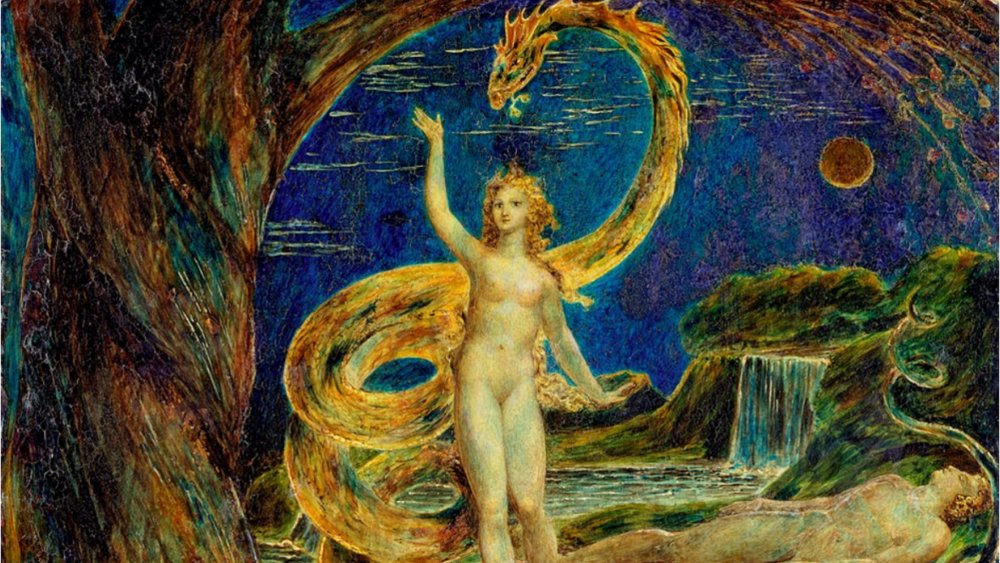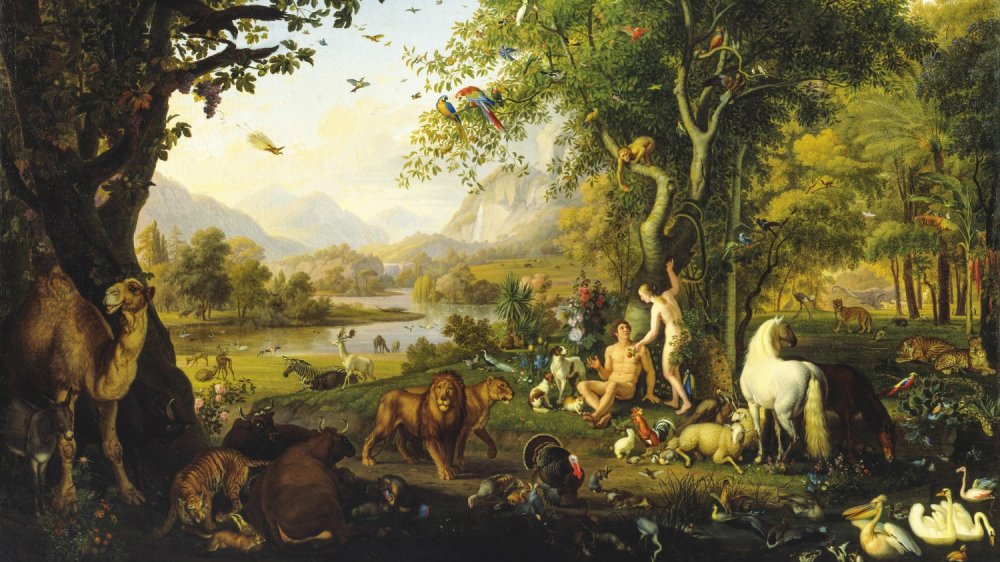Where Is The Garden Of Eden Located?
Many of us are familiar with the Adam and Eve story. According to the Old Testament's Book of Genesis, God creates the universe, the stars, the sky, the animals, and eventually, the people. Things were going just fine until the world's first couple decided to question authority. Lo and behold: Eve and Adam lose their fine, fine nature preserve where they had everything they needed.
While it's easy to read this story as a symbolic tale like any other fable — a loss of innocence, the dangers of accepting bad apples from creepy, snakey folks (Snow White, we're looking at you) — some people actually believe that there was a physical place somewhere on Earth where the Garden of Eden resided.
At this point, it's important to remember that Genesis is the first book of the Jewish Torah, believed to be a divine manifestation of cosmic law written as a religious text to codify instructions from God. At the time it was written, it didn't just refer to abstractions like "Hell," for example, but physical places like Hell's inspiration, the Valley of Hinnom, as outlined on Medium. At this not-too-wholesome location in Jerusalem, ancient Israelites apparently engaged in child sacrifice to appease the Canaanite god Moloch during the reign of King Solomon, circa 1000 BCE, per Britannica. In the Greek: Gehenna. In the eventual Anglo-Saxon: Hel. So if Hell was based on a physical place, why not the Garden of Eden?
After the last Ice Age in the Eastern Mediterranean
When trying to locate the physical, actual inspiration for the Garden of Eden, you might assume that we'd be looking for a pretty lush, verdant expanse stuffed full of bountiful fruits and leaves over groins. But there have been a lot of climate changes in the Middle East going back to, oh ... 10,000 BCE or so. The Earth was coming out of its last ice age, as Britannica describes, and entering the Holocene period where all the little humans have run amok. Remember the Noah story about the flood and the animals on that big boat? There have been over 200 accounts of such a story worldwide, per Ark Encounter, and actual geological records discussed on Springer Link show that the Eastern Mediterranean (Jordan, Lebanon, Egypt, Israel, Palestine) used to be much more hospitable and green than its current desertified state.
We can look to actual passages in Genesis to try and locate the Garden of Eden. There are some pretty specific directions in Chapter Two, especially verses 10-14, that point to recognizable geography. As the English Standard Version says, a river from the Garden of Eden branched off into four different rivers: the Pishon, the Gihon, and the Tigris and Euphrates in modern-day Iran. The passage even talks about what goods or precious minerals each area is known for, such as gold in Havilah, near the Pishon.
Four rivers that flow from one source
The two current-day rivers mentioned in Genesis — the Tigris and Euphrates — are generally agreed upon by scholars, while the Pishon and Gihon are not, per Chabad. But because the Tigris (original name: Chidakel) and Euphrates (original name: Perat) refer to modern rivers, the Garden of Eden story must come from a time after the last Ice Age, when Holocene river formations settled into place, but before the Eastern Mediterranean went dry.
Some think the Pishon is the Ganges, while others think it's the Nile, which itself splits into two tributaries at Khartoum, Sudan: the Blue Nile (east) and the White Nile (west). The Gihon can be accurately identified as the Blue Nile, which in Genesis "flowed around the whole land of Cush," the old name for modern-day Ethiopia. It's geographically tidier, then, to say that the Pishon is the Nile or White Nile rather than the Ganges. This places the Garden of Eden somewhere between Egypt and Iran, although there is no central location from which the four rivers flow.
Perhaps the writer(s) of Genesis were referring to a wide region rather than a small locale. Maybe the bounty of Genesis referred to the natural resources of the area (gold in Havilah, for instance), or just reflected the remembrance of a peaceful time, while other story elements were symbolic (the tempter, the fruit, nakedness). Whatever the truth, we can be sure people will continue wondering and searching for years to come.


